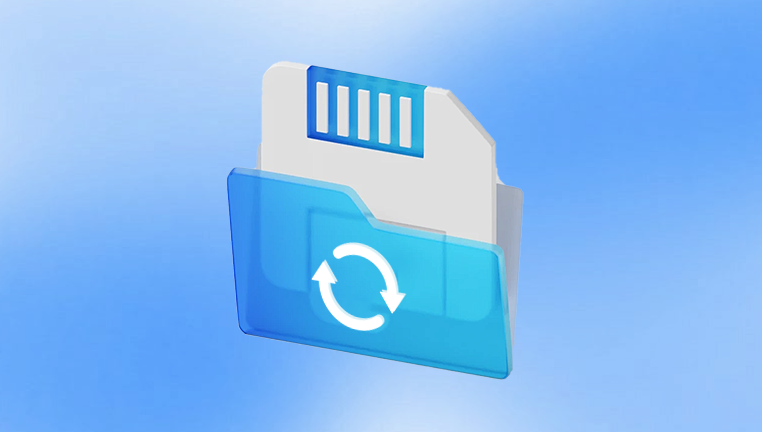SD cards are widely used for storing photos, videos, and important data in devices like cameras, smartphones, and tablets. However, accidental deletion, formatting, or corruption can lead to the loss of valuable files. Fortunately, recovering erased files from an SD card is often possible using various methods and tools.
Common Causes of Data Loss on SD Cards
Accidental Deletion: Users often mistakenly delete files while managing their SD card.
Formatting: Formatting an SD card erases all data, making it seem lost.
Corruption: Improper ejection, power failure, or malware can corrupt files.
Physical Damage: Water damage, impact, or wear and tear can lead to data loss.
How Data Recovery Works
When you delete a file from an SD card, the data isn’t immediately erased; instead, the space it occupies is marked as available for new data. Recovery tools can often retrieve these files until they are overwritten by new data. Therefore, it’s crucial to stop using the SD card as soon as you realize data loss.

Preparation for Recovery
1. Stop Using the SD Card
As soon as you realize files are missing, stop using the SD card to prevent overwriting the lost data.
2. Create a Backup
If the SD card is still accessible, create a backup of any remaining files. This ensures you don’t lose more data during the recovery process.
3. Choose a Recovery Method
There are several methods to recover erased files from an SD card:
Software Recovery
Manual Recovery
Professional Data Recovery Services
Software Recovery
1. Choosing the Right Software
Drecov Data Recovery is a powerful software solution designed to help users recover lost or deleted files from various storage devices, including SD cards, external hard drives, and USB drives. With its user-friendly interface and advanced recovery algorithms, Drecov Data Recovery simplifies the process of retrieving important data, making it accessible for both tech-savvy individuals and those less familiar with technology.
Comprehensive File Recovery: Drecov Data Recovery supports a wide range of file formats, including documents, photos, videos, and audio files. Whether you've accidentally deleted files or experienced a system crash, the software is capable of recovering various data types.
Deep Scan Functionality: The software offers a deep scan option, which thoroughly searches the storage device for recoverable files. This is particularly useful for situations where quick scans fail to locate lost data.
Preview Option: Before recovering files, users can preview them to ensure they are retrieving the correct items. This feature saves time and helps avoid restoring unwanted files.
Easy-to-Use Interface: Drecov Data Recovery is designed with a straightforward layout, allowing users to navigate through the recovery process with ease. Step-by-step instructions guide users through each phase, from scanning to recovery.
Support for Multiple Devices: In addition to SD cards, Drecov Data Recovery can recover data from various devices, including hard drives, SSDs, and digital cameras, making it a versatile tool for data management.
2. Installation and Setup
Download the Software: Visit the official website of your chosen recovery software and download the appropriate version for your operating system.
Install the Software: Follow the installation instructions. Make sure to install the software on a different drive than the SD card to avoid overwriting any recoverable data.
3. Connecting Your SD Card
Insert the SD Card: Use a card reader to connect the SD card to your computer. Ensure it’s properly recognized by the system.
Open the Recovery Software: Launch the data recovery software and select your SD card from the list of drives.
4. Scanning for Deleted Files
Select Recovery Mode: Most software will offer different modes (quick scan and deep scan). A deep scan is more thorough but takes longer.
Start the Scan: Click the scan button to begin searching for recoverable files.
Wait for Completion: The scanning process may take some time, depending on the card’s capacity and the number of files.
5. Preview and Recover Files
Review Found Files: Once the scan is complete, the software will display a list of recoverable files. Most tools allow you to preview files.
Select Files for Recovery: Choose the files you wish to recover.
Recover and Save: Click the recovery button and select a destination folder on your computer (not the SD card) to save the recovered files.
Manual Recovery Methods
1. Using Command Prompt (Windows)
If you’re comfortable with command line tools, you can attempt manual recovery using Windows Command Prompt:
Open Command Prompt: Press Windows + R, type cmd, and hit Enter.
Run CHKDSK: Type the following command and press Enter:
bash
复制代码
chkdsk X: /f
Replace X: with the drive letter of your SD card.
Check for Recovered Files: After the process completes, check your SD card for recovered files.
2. File History (Windows)
If you’ve enabled File History, you can recover previous versions of files:
Open Control Panel: Navigate to Control Panel > System and Security > File History.
Restore Personal Files: Select the SD card and browse for files you want to recover.
3. Time Machine (Mac)
For Mac users, Time Machine can help recover files if it’s been configured to back up your SD card:
Open Time Machine: Connect your SD card and launch Time Machine.
Browse Backups: Navigate through the backups to find and restore lost files.
Professional Data Recovery Services
If software recovery methods fail, consider professional data recovery services. These services are equipped to handle severe damage and corruption:
Research Services: Look for reputable data recovery companies with positive reviews.
Consultation: Many offer free consultations to assess the damage and potential recovery success.
Cost Consideration: Be aware that professional recovery can be expensive, often ranging from $100 to $1.000. depending on the extent of the damage.
Tips for Successful Data Recovery
1. Avoid Writing New Data
Prevent any writing to the SD card to maximize recovery chances. This includes taking new photos or videos.
2. Use Multiple Recovery Tools
If one software doesn’t find your files, try another. Different tools utilize various algorithms, increasing the chance of recovery.
3. Regular Backups
To prevent future data loss, regularly back up your SD card’s contents. Use cloud storage or an external drive for redundancy.
4. Handle Your SD Card with Care
Proper care can reduce the risk of corruption and damage. Avoid exposure to moisture, extreme temperatures, and physical stress.




